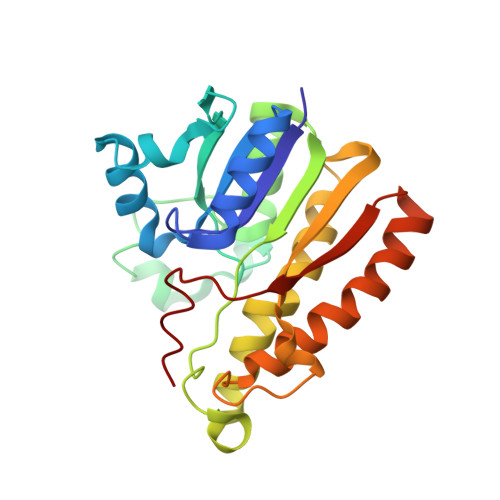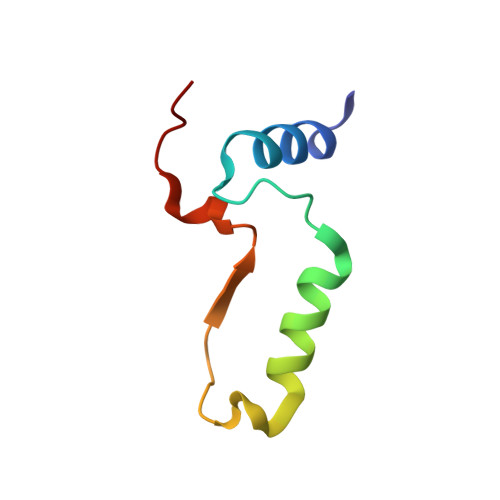X-ray structural analysis of Plasmodium falciparum enoyl acyl carrier protein reductase as a pathway toward the optimization of triclosan antimalarial efficacy
Freundlich, J.S., Wang, F., Tsai, H.C., Kuo, M., Shieh, H.M., Anderson, J.W., Nkrumah, L.J., Valderramos, J.C., Yu, M., Kumar, T.R., Valderramos, S.G., Jacobs, W.R., Schiehser, G.A., Jacobus, D.P., Fidock, D.A., Sacchettini, J.C.(2007) J Biological Chem 282: 25436-25444
- PubMed: 17567585
- DOI: https://doi.org/10.1074/jbc.M701813200
- Primary Citation of Related Structures:
2FOI, 2NQ8, 2OL4, 2OOS, 2OP0, 2OP1 - PubMed Abstract:
The x-ray crystal structures of five triclosan analogs, in addition to that of the isoniazid-NAD adduct, are described in relation to their integral role in the design of potent inhibitors of the malarial enzyme Plasmodium falciparum enoyl acyl carrier protein reductase (PfENR). Many of the novel 5-substituted analogs exhibit low micromolar potency against in vitro cultures of drug-resistant and drug-sensitive strains of the P. falciparum parasite and inhibit purified PfENR enzyme with IC50 values of <200 nM. This study has significantly expanded the knowledge base with regard to the structure-activity relationship of triclosan while affording gains against cultured parasites and purified PfENR enzyme. In contrast to a recent report in the literature, these results demonstrate the ability to improve the in vitro potency of triclosan significantly by replacing the suboptimal 5-chloro group with larger hydrophobic moieties. The biological and x-ray crystallographic data thus demonstrate the flexibility of the active site and point to future rounds of optimization to improve compound potency against purified enzyme and intracellular Plasmodium parasites.
- Department of Medicinal Chemistry, Jacobus Pharmaceutical Company, Princeton, New Jersey 08540, USA. joelf@princeton.edu
Organizational Affiliation:


















